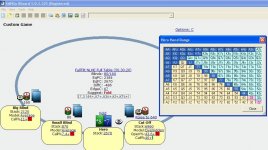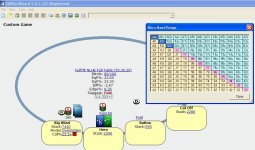cjatud2012
¯\_(ツ)_/¯
Silver Level
Villian Stats (VPIP/PFR/AF): 44/28/1.8
full tilt poker $6 + $0.50 No Limit Hold'em Tournament - t80/t160 Blinds - 4 players - View hand 571630
The Official DeucesCracked.com Hand History Converter
CO: t7600 M = 31.67
Hero (BTN): t2670 M = 11.12
SB: t950 M = 3.96
BB: t2280 M = 9.50
Pre Flop: (t240) Hero is BTN with XX
CO raises to t640, Hero ???
Villain is spewing left and right, he called my 3-bet with J7 a few hands earlier, so I probably have no fold equity. What range can I profitably push for value here? How would that range differ if SB, BB, and I all had the same effective stack?
full tilt poker $6 + $0.50 No Limit Hold'em Tournament - t80/t160 Blinds - 4 players - View hand 571630
The Official DeucesCracked.com Hand History Converter
CO: t7600 M = 31.67
Hero (BTN): t2670 M = 11.12
SB: t950 M = 3.96
BB: t2280 M = 9.50
Pre Flop: (t240) Hero is BTN with XX
CO raises to t640, Hero ???
Villain is spewing left and right, he called my 3-bet with J7 a few hands earlier, so I probably have no fold equity. What range can I profitably push for value here? How would that range differ if SB, BB, and I all had the same effective stack?




